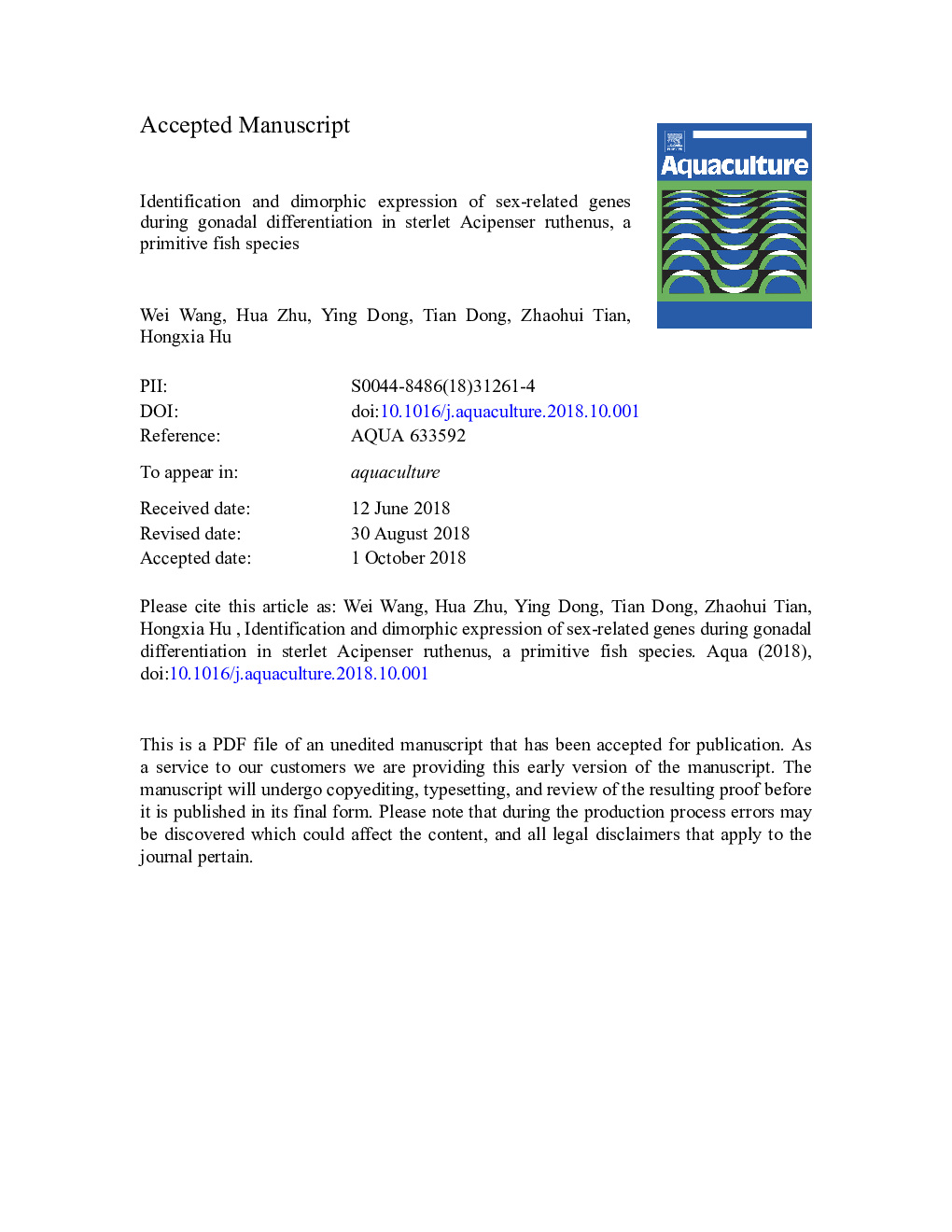| Article ID | Journal | Published Year | Pages | File Type |
|---|---|---|---|---|
| 11908777 | Aquaculture | 2019 | 43 Pages |
Abstract
Sturgeons (Acipenseriformes) are ancient and endangered but valuable commercial aquaculture species. Due to an increasing interest in sturgeon aquaculture and breeding, especially for the production of caviar, a precise sex molecular marker is desired for the early sex identification of sturgeon. Because of the smallest size as well as the shortest sexual maturation period, the sterlet (Acipenser ruthenus) is considered to be an excellent model for studying of gonad differentiation in sturgeons. The present work investigated temporal expression of 13 genes, encoding regulatory factors, steroid receptors and transcription factors, during sex differentiation in sterlet from 6â¯months post-fertilization (mpf) to 15 mpf. Meanwhile, histological observation and determination of steroids levels of 11-ketotestosterone (11-KT) and 17β-estradiol (E2) in serum were performed to aid in sex identification. The gonad development of sterlet showed obvious asynchrony. Sex differentiation was first observed at 6 mpf, while some fish even retained undifferentiated gonads at 15 mpf. Expression of 13 genes revealed that only foxl2 and cyp19a1 maintained significant sexual dimorphic expression and had higher expression in female from the sex differentiation stage of 6 mpf. The male related genes amh and dmrt1 showed sexual dimorphic expression since spermatogonial proliferation stage, while hsd11b2 and gsdf had significantly higher expression in mid-spermatogenesis stage. The expression of dax1 and dkk1 showed a different pattern in sterlets in comparison to different mammals and other teleost: they increased with ovarian development and showed significantly difference since ovary perinucleolus stage, but maintained low expression at all stages of testes. The other five genes (sf-1, rspo, ar, era and erb) showed no sexual dimorphic expression pattern during sex differentiation. Serum 11-KT and E2 levels remained were low in all individuals with no sexual dimorphic expression pattern during sex differentiation. Taken together, our results suggest that mRNA levels of foxl2 and cyp19a1 could be used as molecular markers for sterlet sexing as early as the beginning of sex differentiation.
Related Topics
Life Sciences
Agricultural and Biological Sciences
Aquatic Science
Authors
Wei Wang, Hua Zhu, Ying Dong, Tian Dong, Zhaohui Tian, Hongxia Hu,
